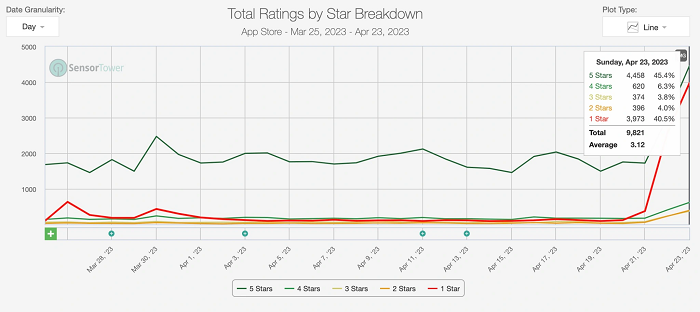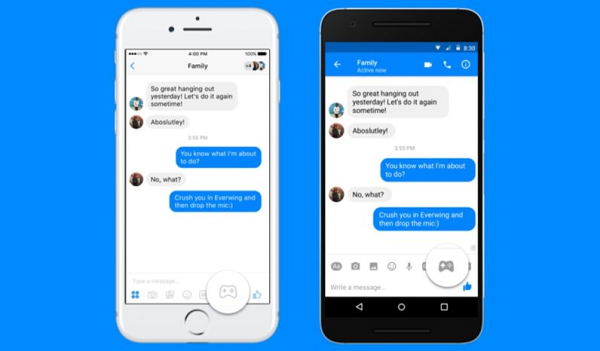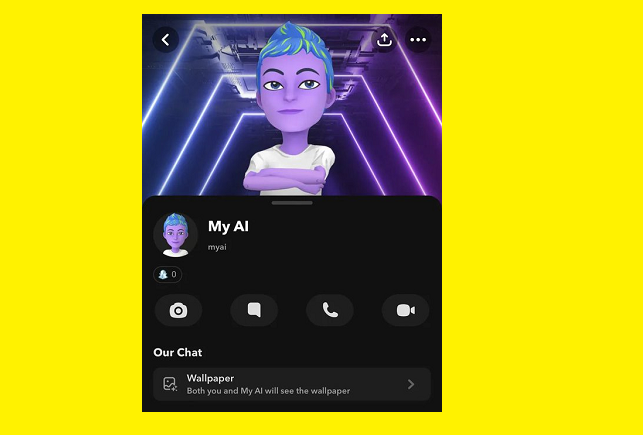Snapchat’s learning the hard way that people don’t appreciate platforms messing with their private chats, something that Meta has been grappling with for years.
Last week, at its annual Partner Summit, Snapchat announced that its ‘My AI’ GPT-powered chatbot element would be rolled out to all users, expanding from being a Snapchat+ subscriber-only feature.
My AI enables you to chat with an AI entity, and have it answer questions, with the My AI chat now pinned to the top of all user inboxes in the app.
Which, evidently, has not been well-received by all.
As reported by TechCrunch:
“Over the past week, Snapchat’s average US App Store review was 1.67, with 75% of reviews being one-star, according to data from app intelligence firm Sensor Tower. For comparison, across Q1 2023, the Snapchat average U.S. App Store review was 3.05, with only 35% of reviews being one-star.”

You can see the spike here, with Snap seeing an influx of one-star reviews. Five-star reviews have also spiked, but TechCrunch notes that many of these are also critical of My AI, with users threatening to pull their five-star endorsements, or change them to one-star, if the functionality is not removed.
The main issue seems to be that the My AI chat has been embedded into their personal inbox, the space where most Snap users interact. That, to some, feels intrusive, and there’s no way to actually remove the My AI chat from the top of your inbox display.
Snap users are highly connected to the app, with many using it as their primary platform for personal interactions. With this in mind, you can see why the random insertion of My AI is an annoyance, while some users have also raised concerns about the AI element itself, and the amount of information that it’s been able to reveal about their location, personal details, etc.
But it’s the placement of the option that’s been most problematic. Which, as noted, is a challenge that Meta’s also been contending with for years as it seeks to monetize private messaging in WhatsApp and Messenger.
Back in 2016, Meta added Messenger Bots as a means to encourage people to interact with brands, and other entities in the app. It failed, while subsequent efforts to add in games, and other elements, have also been viewed negatively, and eventually shelved in favor of simplicity.

Why? Because people generally want to use messaging apps to send messages to their contacts, and not really anything else. Ads in message streams are intrusive, and the additional of other functionalities has also seemingly been viewed as an unwanted distraction from their more personal communications.
Which is a far cry from China, where apps like WeChat have become a critical connector in almost all aspects of daily life. Meta, and others, have tried to translate this expanded usage to Western markets, but thus far, western users have shown little inclination towards additional functionality – though WhatsApp is now increasingly being used for certain business dealings, an element that’s been slowly growing over time.
But it’s not a big thing as yet, and definitely not in the US or other Western regions. The thing is, most people like their messaging experiences to be confined to their personal chats, and anything that impedes on this has largely been viewed as an intrusion – which we’re once again seeing with the My AI addition.
Which also doesn’t bode well for Elon Musk’s ‘everything app’’ ambitions.
Musk has repeatedly noted that he wants to convert Twitter into an app through which people can conduct all sorts of daily activities, like paying bills, booking tickets, etc. Musk’s view is that by enabling easy payments in the app, that will open up a whole new world of opportunities – but as My AI shows once again, users are generally resistant to functionalities that encroach on more private elements.
That doesn’t mean it won’t ever change, but it’s a key challenge in getting mass adoption of expanded use.
The solution in Snap’s case will likely be as simple as giving users a way to unpin the My AI chat, so they no longer see it – but the case underlines a broader challenge in shifting embedded behaviors, especially in more privacy-focused elements.



